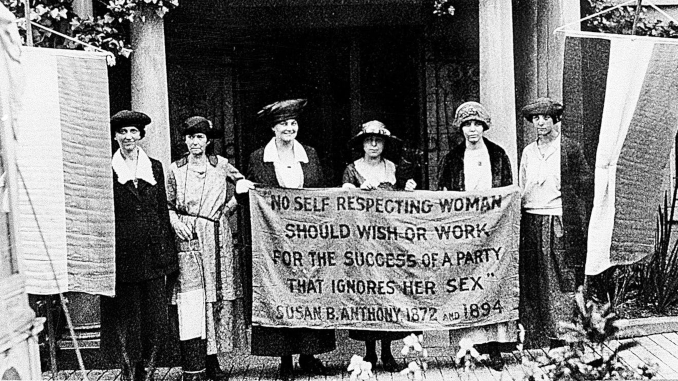
By AFP Staff
On Feb. 13, the House of Representatives passed landmark legislation that would remove the deadline for passing the Equal Rights Amendment (ERA), a constitutional amendment initiated in the 1970s that would guarantee “equal rights” for women. But, in 2020 and the age of #MeToo, do women in the United States really need a 28th Amendment to secure them rights that they, effectively, already have?
The ERA was first passed by Congress in 1972. States were then given seven years to ratify it. That date was later extended to 1982, because most states had not passed it, but even by that date only 35 states had passed it. The measure was effectively dead after that.
This all changed when, over the past two years, three more states approved the amendment, with Virginia becoming the 38th state after it became Democrat-controlled.
Now, the Democrat-controlled House wants to pour new life into the ERA, with its proponents arguing that women are still not being treated fairly despite laws in existence that bar discrimination in the workplace based on sex.
Without pointing to any specifics, Rep. Jackie Speier (D-Calif.) said on the House floor: “Women want to be equal and we want it in the Constitution. I am equal on this House floor with all of my male colleagues, but when I walk out I have fewer rights and protections than them. I rise today because the women of America are done being second-class citizens.”
But, the question is, how are women second-class citizens when statistics show that more women than men vote in U.S. elections, women outperform men at all levels of education, and women dominate many professional arenas like human resources, public affairs, and medical fields?
Author Warren Farrell wrote the definitive book on the subject, titled “Why Men Earn More: The Startling Truth Behind the Pay Gap—and What Women Can Do About It,” back in 2005, and his book still stands up more than a decade and a half later. In it, Farrell cites dozens of sectors where women actually earn more than men, and cites other industries where women have distinct privileges and can earn as much as men for doing far less risky work, such as in exposure industries or in the military.
Ask modern feminists to provide specifics on how women are treated unfairly compared to men today, and they will huff and say, “Everyone knows why,” but then struggle to provide examples short of “men can walk around at night more freely than women.”
In reality, though, most victims of violent crime are men not women.
This isn’t to say that men are the ones who are oppressed; it is only to point out that both men and women benefit from certain privileges afforded each sex, and, in the end, in Western society, everything shakes out pretty evenly.
On the House floor, Rep. Debbie Lesko (R-Ariz.) argued that the time for the ERA has long passed.
“The U.S. Department of Justice issued a legal opinion just last month reiterating that the ERA’s ratification timeline is expired. Supreme Court Justice Ruth Bader Ginsburg said ‘the deadline passed. I would like to see a new beginning. I’d like it to start over,’” said Lesko.
And that brings us to the real reason liberal groups are agitating to pass the ERA.
“The third reason I oppose this bill,” added Lesko, “if ratified, the ERA would be used by pro-abortion groups to undo pro-life legislation and lead to taxpayer-funded abortions.”
Republicans have been arguing that, if enacted, the ERA will enshrine abortion as a constitutional amendment, making it all but impossible to regulate and, ultimately, end it.
